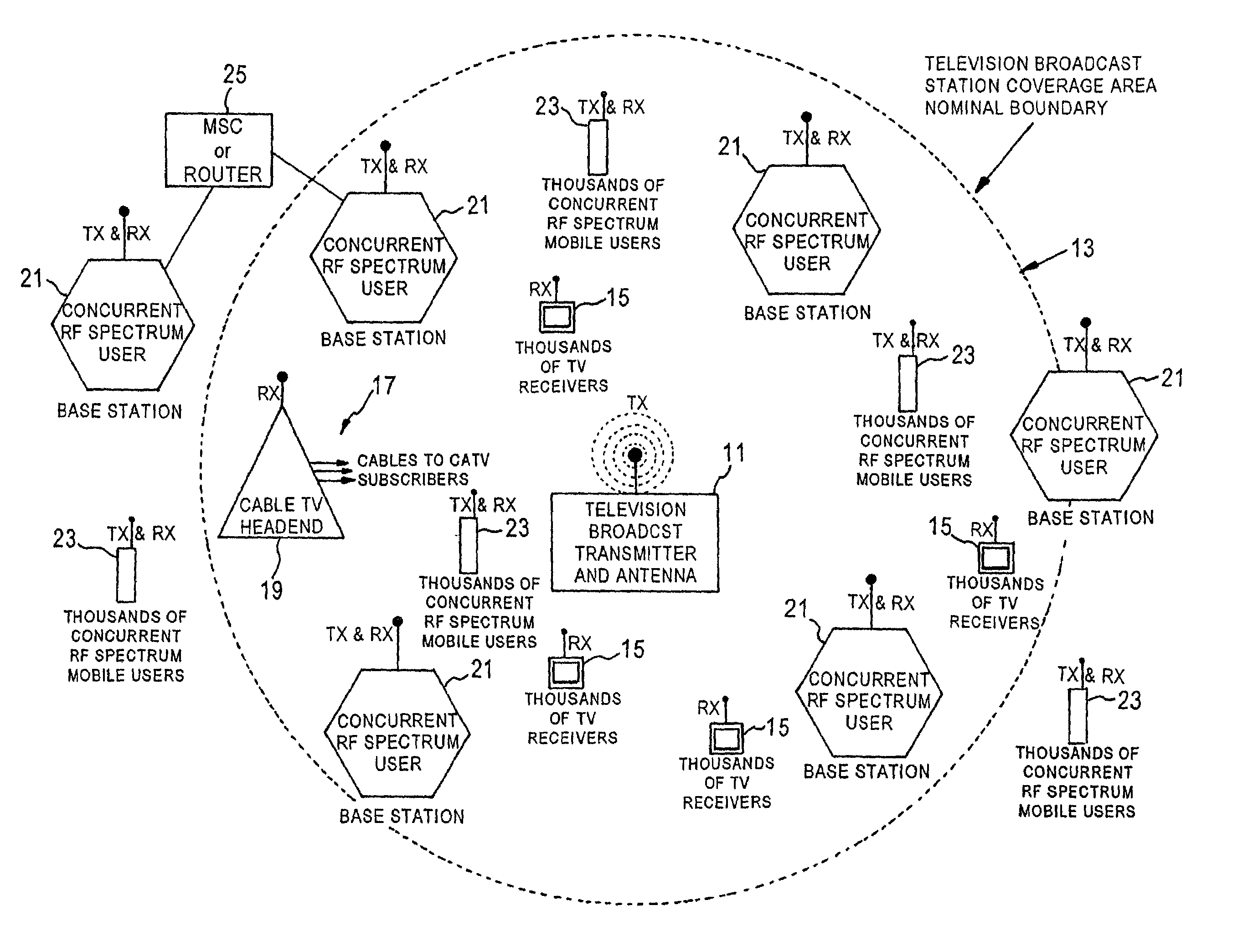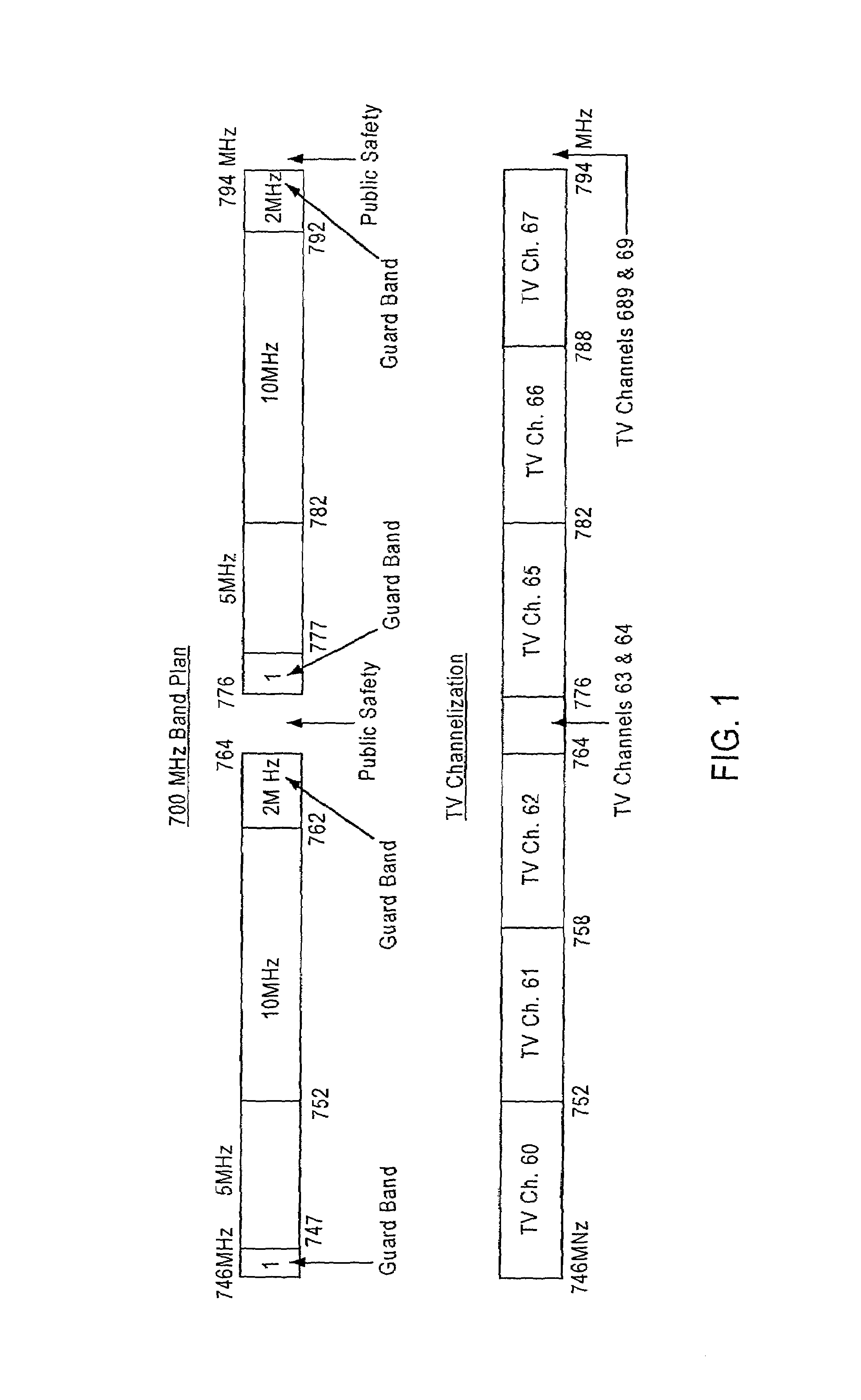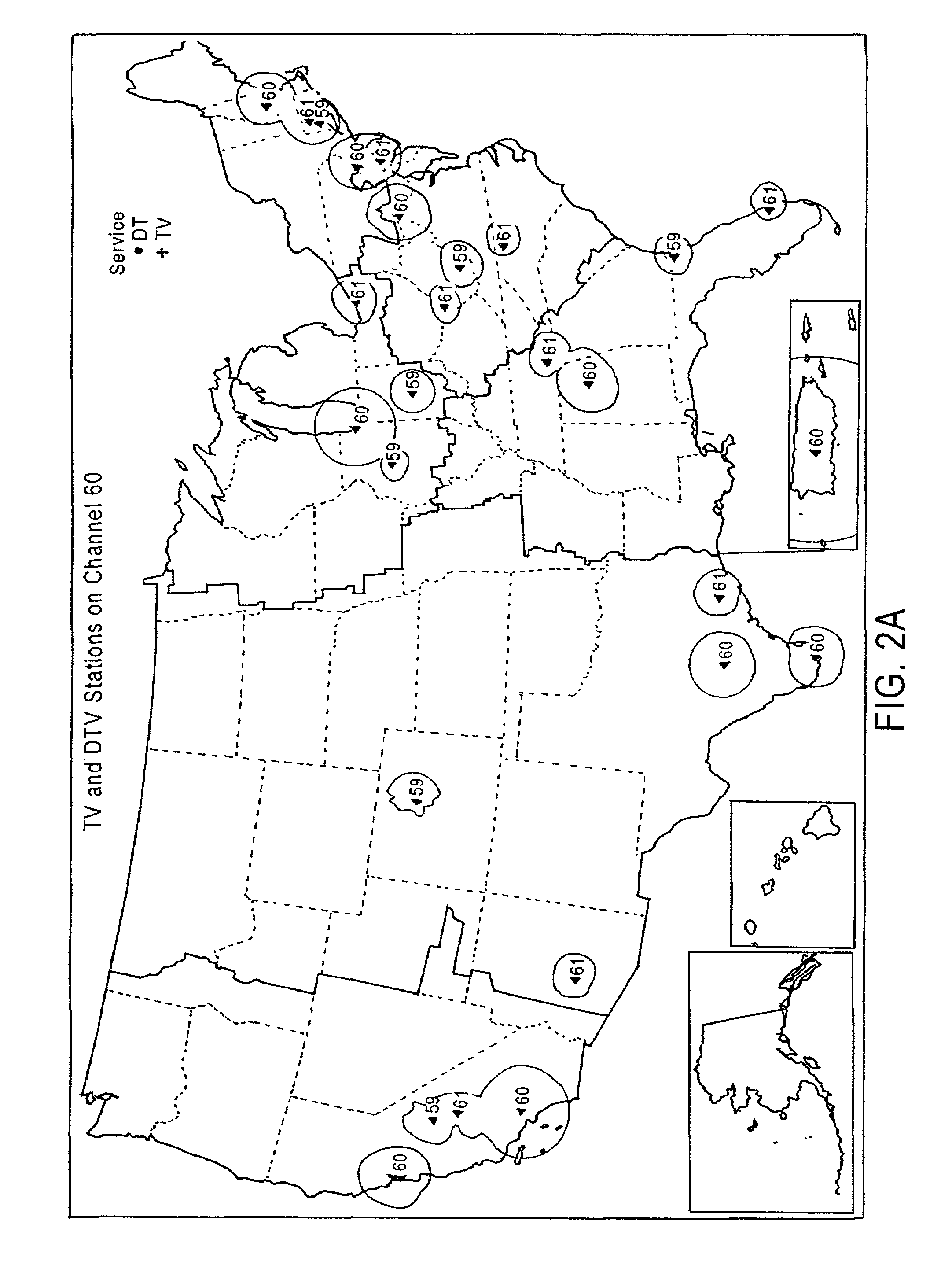Methods and apparatus for utilizing radio frequency spectrum simultaneously and concurrently in the presence of co-channel and/or adjacent channel television signals by adjusting transmitter power or receiver sensitivity
a radio frequency spectrum and co-channel technology, applied in the field of mitigating interference, can solve the problems of severe interference, interference with the reception of television broadcast signals, and the demand for wireless services has exceeded the available capacity in the area, so as to minimize the interference of received signals, reduce power, and mitigate interference.
- Summary
- Abstract
- Description
- Claims
- Application Information
AI Technical Summary
Benefits of technology
Problems solved by technology
Method used
Image
Examples
Embodiment Construction
[0050]The inventive interference mitigation relies on keying operations of concurrent wireless users, so that the new users operate in times when the broadcast video signal does not carry useful image content or operate in such a manner as to avoid interfering with the broadcast video signal. There are a number of reasons why television broadcasts today carry programs in “letterbox” format, for example, because the program was adapted to the standard aspect from some other aspect ratio, such as that for HDTV or for wide screen movie presentations. In the letterbox format substantial bars of the visual television signal contain filler, typically black signals. Concurrent wireless operation during the timing of these bars and / or during blanking intervals reduces or eliminates the impact of the concurrent operation on the same or adjacent spectrum, with respect to the useful video information in the actual picture.
[0051]FIG. 3 is a block diagram of broadcast television and concurrent w...
PUM
 Login to View More
Login to View More Abstract
Description
Claims
Application Information
 Login to View More
Login to View More - R&D
- Intellectual Property
- Life Sciences
- Materials
- Tech Scout
- Unparalleled Data Quality
- Higher Quality Content
- 60% Fewer Hallucinations
Browse by: Latest US Patents, China's latest patents, Technical Efficacy Thesaurus, Application Domain, Technology Topic, Popular Technical Reports.
© 2025 PatSnap. All rights reserved.Legal|Privacy policy|Modern Slavery Act Transparency Statement|Sitemap|About US| Contact US: help@patsnap.com



